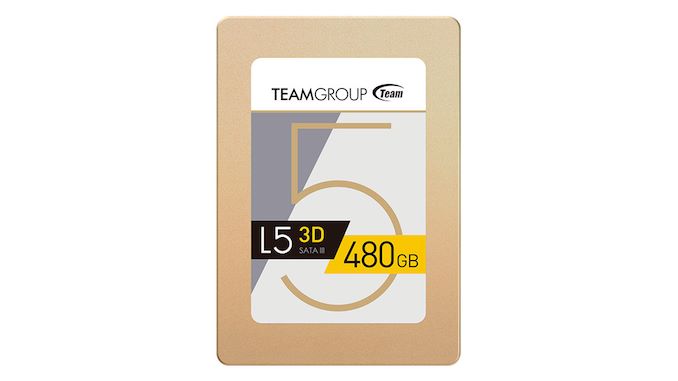The TeamGroup L5 LITE 3D (480GB) SATA SSD Review: Entry-Level Price With Mainstream Performance
Conclusion
The SATA SSD market is pretty boring these days, and just about the only way for a product to stand out is to be significantly cheaper than the competition. Sometimes we see one of the top brands use the advantages of their vertical integration to price a great product low enough to shut out lots of lesser entry-level drives. It’s relatively rare that we see the same tactic pulled off by a smaller fabless OEM. For most of its time on the market, the TeamGroup L5 LITE 3D has been one of the cheapest drives in the North American market. The low pricing alone was reason enough for me to ask Team to send one my way last time they were offering up SSDs for review. The L5 LITE 3D didn’t disappoint.

The performance profile of the Team L5 LITE 3D generally fits what we expect from a mainstream SATA SSD rather than an entry-level drive. None of our tests revealed any significant performance loss from the SLC cache filling up, and running our ATSB Heavy and Light tests on a full drive didn’t bring it to its knees. The only negative result that really stands out is with random reads, which are both slower and more power-hungry than what we see with competing SATA drives from top-tier brands like Crucial, WD and Samsung. Even then, the difference is most pronounced at higher queue depths that are less likely to be encountered during typical real-world usage.
The Team L5 LITE 3D’s power consumption under load is generally a bit high, but not enough to worry about. What is a real problem is that idle power management doesn’t work as it should—it idles around 0.5W with or without SATA link power management. It’s impossible for us to test whether the deeper DevSleep mode works properly since our testbed is a desktop system, but the intermediate Slumber state should be able to get the drive well under 0.1W.
The Team L5 LITE 3D is a decent choice for a desktop that is overdue for an upgrade to its first SSD, and it’s a very affordable way to add a second SSD to a system where the primary SSD is getting full. The power management issues make it a poor choice to go into a laptop, and for an all-new desktop build the primary SSD should probably be a NVMe drive rather than SATA except where the budget is extremely tight. For users with fairly light storage workloads, the low write endurance of the L5 LITE 3D should still be plenty, and it’s probably a more sensible tradeoff than the sometimes steep performance penalty of DRAMless SATA SSDs.
While SSD prices were still in freefall, the L5 LITE 3D was leading the charge and occasionally standing out to a degree we haven’t seen since the Mushkin Reactor first made 1TB SSDs relatively affordable back in the planar NAND days. Now that SSD prices have leveled out, the Team L5 LITE 3D doesn’t stand out as much, but it’s still a good deal for a cheap SSD that doesn’t really feel cheap.







